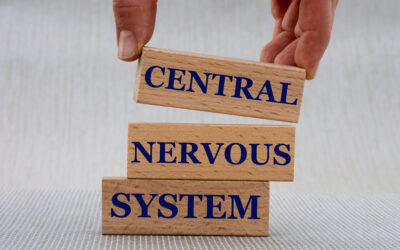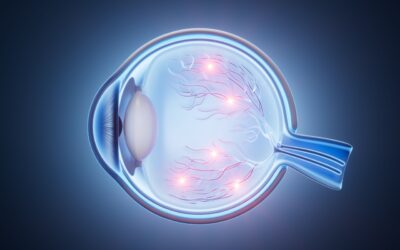The Functional Observational Battery (FOB) test is an established systematic tool for evaluating the nervous systems of rats and determining neurotoxic effects. The FOB comprises more than 30 parameters, including behavioral aspects.
These evaluations are crucial to neurotoxicity testing but depend on multiple subjective endpoints and can differ based on the experience in the test facility. WuXi AppTec conducted a study to better understand how sensitive and accurate the FOB test can be when studying the effects of central nervous system and non-central nervous system-targeted compounds.
Why is the FOB test so crucial?
The FOB test detects functional deficits in rats caused by neurotoxic effects. These tests are not supposed to be used alone, and additional tests may be necessary to properly assess a drug or substance’s neurotoxic potential.
In the test, the rats are exposed to a compound and then monitored for changes in behavior and neurological abnormalities. Various functions are assessed during observation periods.
The tests check for many aspects, including autonomic functions such as body temperature and breathing, which are easily and accurately measured. Neuromuscular and sensorimotor aspects are also easy to measure, and behavioral aspects are also included. However, these aspects could be considered unreliable as they are measured subjectively and could be affected by the lab’s setup and the experience levels of the researchers performing the tests.
However, this form of testing is incredibly important to the drug development process as it helps with early detection of neurotoxicity, allows a comprehensive assessment of central nervous system function, and can identify targeted effects in the CNS. Regulators also require it. With this in mind, the data must be as accurate as possible, even when dependent on subjective assessment.
How the study was conducted
We aimed to establish reference background data and better understand how sensitive and accurate the FOB test is. To do this, we collected the FOB results from 360 studies conducted at the same WuXi AppTec facility in the past three years. The studies were targeted for a variety of issues, including central nervous system disorders.
To avoid bias, the technician was not informed of the animal’s treatment when conducting the tests. The FOB test began with undisturbed observations, first in the home cage and then in an open arena. A manipulative observation followed as each animal was exposed to various stimuli, which became progressively more challenging. The FOB test was then repeated at multiple time points, depending on the PK profile of the test compound. One time point was chosen when the compound was at its highest concentration in the body (Tmax), and the other two or three tests took place typically over the next 24 hours.
Producing insightful results
The results showed that approximately 11% of the compounds tested affected the FOB test. This included 4% of CNS compounds, 3% of non-CNS indication compounds, 1% of antidiabetic compounds, and 3% others.
Some effects were more common in compounds affecting the central nervous system, including:
- Forelimb grip strength: 1.9%
- Hindlimb foot splay: 1.9%
- Low arousal: 2.2%
- Abnormal gait pattern: 1.9%
- Firm of flaccid boy tone: 2.2%
- Uncoordinated landing in air righting reflex and abnormal palpebral closure: 0.8%
The most common effects seen in both CNS-indication and non-CNS-indication compounds were changes in rectal temperature (7.8% of studies), hindlimb grip strength (2.2%), locomotor activity (2.8%), rearing frequency (3.6%), and abnormal posture (1.4%). The remaining FOB parameters were affected by 2% of CNS compounds and 2% of non-CNS-indication compounds.
What we learned from the study
Certain parameters in the FOB test are good indicators of potential issues with the central nervous system. These include gait pattern, arousal, body tone, extensor response, forelimb grip strength, and hindlimb foot splay. This shows that the FOB test is sensitive to CNS-targeted compounds and can provide guidance for potential pharmaceutical mechanisms and follow-up neurotoxicity studies.
However, some of the parameters, such as rearing frequency, locomotor activity, hindlimb grip strength, and rectal temperature, were shown to be common in both CNS-related and non-CNS-related issues, which does not make them as useful in pointing specifically to CNS problems.
A final word
Our study found that the FOB test is a valuable and crucial part of the safety pharmacology core battery for assessing both CNS-targeted compounds and non-CNS compounds. The research identified the behavioral and physiological changes caused by both types of compounds and, through examining over 360 studies, provided critical reference data for assessing the neurotoxic effects using the FOB test. The study marks out which of the parameters in the FOB test are particularly productive in identifying effects from CNS-targeted compounds, enhancing the test’s potential to detect potential neurotoxicity. We’re excited that we can support safer drug development and provide a framework for future studies on this topic.
As a global company with operations across Asia, Europe, and North America, WuXi AppTec provides a broad portfolio of R&D and manufacturing services that enable the global pharmaceutical and life sciences industry to advance discoveries and deliver groundbreaking treatments to patients. Through its unique business models, WuXi AppTec’s integrated, end-to-end services include chemistry drug CRDMO (Contract Research, Development and Manufacturing Organization), biology discovery, preclinical testing and clinical research services, helping customers improve the productivity of advancing healthcare products through cost-effective and efficient solutions. WuXi AppTec received an AA ESG rating from MSCI for the fourth consecutive year in 2024 and its open-access platform is enabling around 6,000 customers from over 30 countries to improve the health of those in need – and to realize the vision that “every drug can be made and every disease can be treated.”


